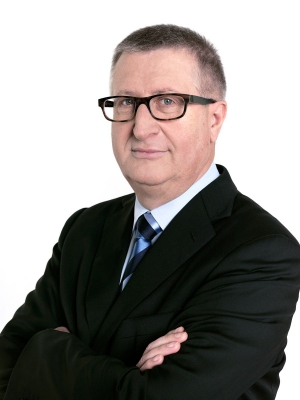Interview Peter Bajak
The individual office will largely become a thing of the past.
Your motto is, “Designing tomorrow’s workplace.” Many experts assume that the workplace of the future will be even more flexible and more mobile. How do you think this will affect the way offices will be furnished?
In the future, the space and interior design concepts used by a company will need to serve a dual purpose. On the one hand, they must meet the requirements of a process-oriented company organisation, address teamwork situations with ever-changing teams, and meet the need for an efficient use of space and lower facility costs. On the other hand, it is important to create a work environment that allows employees to work efficiently, feel at ease and enjoy what they’re doing, while also addressing the need for privacy in the workplace.
In many respects the concept of an individual office has become outdated. There is a clear trend towards group offices because group offices foster communication and facilitate the transfer of knowledge. They also speed up processes and reduce the amount of space needed, which in turn reduces facility costs. These factors ultimately make companies more efficient. The goal is to combine the perceived opposites outlined above using need-based, intelligent design and product concepts.
It is therefore advisable to start by examining the specific work environment and to determine goals and requirements with the client. In that phase it is very important to maintain and promote the company’s flexibility with interior design structures. Our task is to turn these requirements into a design and product concept. We take advantage of the latest findings in the field of workplace technology to combine design and ergonomics with technical aspects such as room acoustics, lighting and media technology.
Companies are dependent on fit and healthy employees, and an optimally furnished office can make a big contribution towards achieving that goal. Which areas are you specifically looking at in that context?
There are many aspects that come into play here. Let’s start with ergonomics at the workplace. To avoid back problems it is essential to adjust the desk height to your body height and to choose the right type of chair. More and more companies are furnishing their offices with sit-stand desks, which allow workers to switch between working in a seated and a standing position to prevent back problems.
The market share of sit-stand desks driven by an electric motor has increased to more than 20% in Germany. Another important aspect is noise, which makes it hard to concentrate and increases fatigue. We offer comprehensive acoustics consultation and acoustically effective solutions designed to have a positive impact on the work climate.
Many companies continue to furnish their own offices and choose to do so without the advice of external experts. What are some typical “interior design traps”?
When companies refurnish their offices they often simply replace the old furniture, even though many times the new office and furniture structures no longer work for the new processes used by the company. They miss the chance to incorporate the latest aspects of workplace design. They also miss an opportunity to reduce facility costs by applying need-based, intelligent design concepts and by underestimating their employees’ needs. These things require a specific expertise that is highly effective because it takes into account many different aspects. As a rule, this level of know-how is not available within the company.
It includes workplace guidelines, DIN standards, ergonomics, acoustics, artificial and natural lighting. In addition, building-specific structures must be taken into account. Without this expert knowledge, the failure to consider small details can have a major effect. Then there are soft factors, such as holistic colour and material concepts that can give a space new life. It is equally important to meet the need for screening and privacy, which contribute to a sense of well-being. Companies can achieve a return on their investment pretty quickly by using professional support. The advice of an expert is indispensable here.

